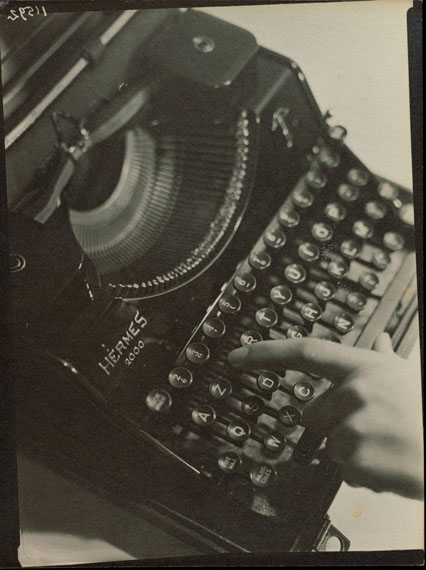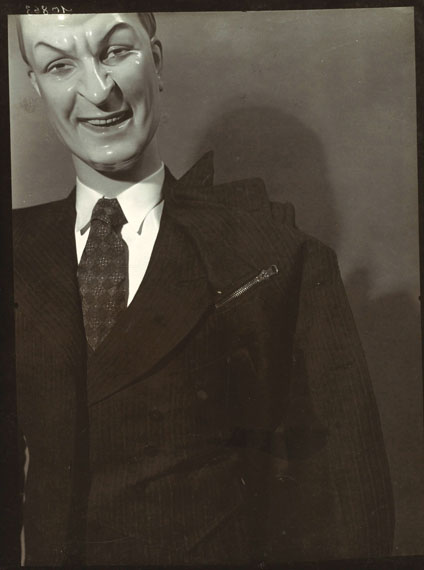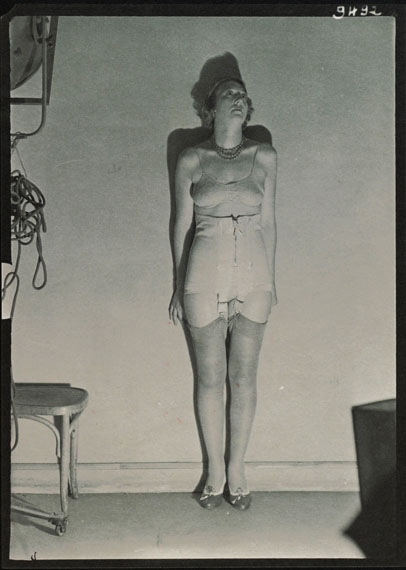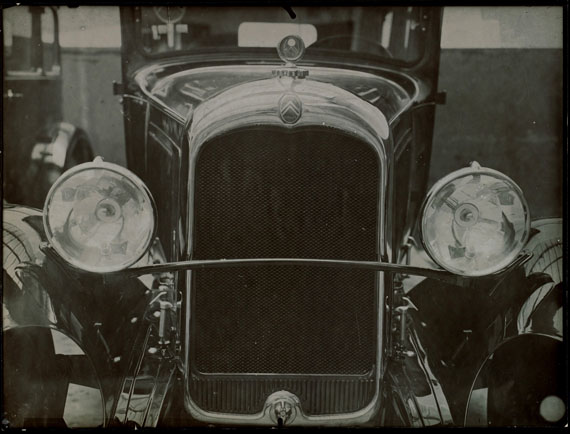
Paul-Martial's World of Ordinary Things
Paul-Martials Welt der gewöhnlichen Dinge
Exhibition: 5 Jul – 19 Oct 2014
Fri 4 Jul 18:30

Kunstmuseum Basel
St. Alban-Graben 8
4010 Basel
+41 (0)61-2066206
pressoffice@kunstmuseumbasel.ch
www.kunstmuseumbasel.ch
Tue-Sun 10-18
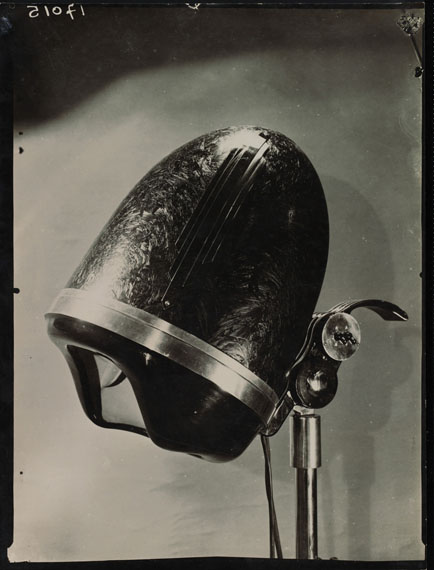
PAUL-MARTIAL’S WORLD OF ORDINARY THINGS
Newly acquired photographs from the Herzog Collection
Exhibition: July 5 – October 19, 2014
Opening: July 4, 7:30pm
The Kunstmuseum Basel opens a new exhibition presenting a selection of one hundred photographs from the archives of the Paris-based advertising agency Éditions Paul-Martial. The black-and-white pictures formed the basis for posters, newspaper advertisements, and brochures and show ordinary things: buildings, cars, typewriters, radiators, mannequins. What was unusual and novel, however, were the composition, lighting, and exposure of the pictures. In today’s perspective, the collection reflects the multifaceted evolution of photography from the 1920s onward. At the same time, it is an invaluable source for historians, documenting early forms of the carefully designed presentation of commodities and strategies designed to lure the consumer. The photographs are part of a collection newly acquired from the Herzog Collection and have never been on public display.
Cans make it possible to preserve food for the long term; zippers allow bags and pockets to be securely closed; rubber soles protect the walker from slipping; car jacks make it easier to change a tire: the advertising photographs produced by Éditions Paul-Martial tell stories about everyday life and how products like radiators, boilers, and cooking stoves help make it more pleasant. This renders the collection an extraordinarily valuable resource for historians: it illustrates the early history of the staging of consumer goods and the strategies employed to seduce the viewer. Beyond consumer products, the agency’s photographers also captured the new worlds of work in factories and offices and the rise of modern travel and communication technologies. For the time being, most of the photographs’ creators remained anonymous; in the business perspective, individual authorship was obviously a secondary concern, especially since the majority of the pictures were a sort of intermediate product to be used by graphic artists in the design of brochures and posters.
New Objectivity and Neues Sehen The historic photographs also reflect the multifaceted evolution of photography as an art in its own right from the 1920s onward. Pictures of buildings, machines, and selected products hew to the sober aesthetic of the New Objectivity, which took hold after the Great War. Photographs of transformer stations and bridges point to the Neues Sehen (New Vision) of the Bauhaus photographers and the works of the Russian avant-garde, which emphasized diagonal lines to heighten the dynamic quality of the picture—this influence is also evident in techniques such as photomontage and double exposures. In isolated objects and enigmatic motifs such as a pinecone, the surreal, mysterious, and sometimes also absurd infiltrate the world of ordinary things. The photographers’ love of experimentation is palpable throughout: they often created small series in which they tried different lighting effects and unusual angles of view. The selection of a hundred photographs is drawn from a larger collection the museum acquired from the collection of Peter and Ruth Herzog, Basel, in 2012 through a combined purchase-and-donation agreement. The exhibition was designed in close collaboration between the curator, Anita Haldemann, and the photography collector and expert Peter Herzog.
The Herzog Foundation and the Fonds Paul-Martial
The Herzog Foundation’s collection of historic photographs is of eminent international significance. It is the fruit of four decades of dedicated efforts on the part of the collectors Peter and Ruth Herzog. In 2002, the Herzogs established the Herzog Foundation in order to create a forum for ca. 300,000 photographs, foster public interest in the collection’s holdings, and build a discursive framework for the presentation of their treasures. The extensive collection of samples and the reference library at Ruth and Peter Herzog’s Laboratory of Photography now enable interested scholars and laypeople to engage in extensive studies in the history of international photography (visit www.fondation-herzog.ch for more information). The Fonds Paul-Martial—considerable parts of its inventory have also gone to the Musée d’Art Moderne de Saint-Étienne Métropole, the department of prints and photography at the Bibliothèque nationale de France, and the collection of Marc Pagneux, France—is still widely unknown, and the work of exploring this exceptionally rich archive, which promises important insights into the history of photography and especially of contemporary art, has only just begun.
Colloquium at the Kunstmuseum
A one-day scholarly colloquium on the photographs of the Éditions Paul-Martial will be held at the Kunstmuseum on August 8, 2014. Please visit www.kunstmuseumbasel.ch for our complete program of events.�
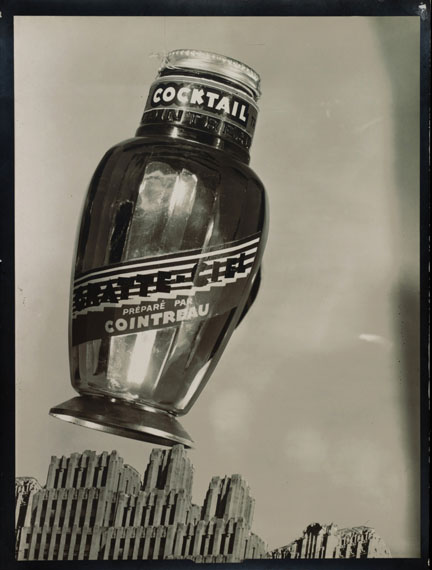
PAUL-MARTIALS WELT DER GEWÖHNLICHEN DINGE
Neu erworbene Fotografien aus der Sammlung Herzog
Ausstellung: 5. Juli bis 19. Oktober 2014
Eröffnung: 4. Juli, 18:30 Uhr
Das Kunstmuseum Basel zeigt eine Auswahl von hundert Fotografien der Pariser Werbeagentur Éditions Paul-Martial. Die Schwarzweiss-Aufnahmen dienten als Rohmaterial für Plakate, Inserate und Werbebroschüren und zeigen gewöhnliche Dinge: Gebäude, Autos, Schreibmaschinen, Radiatoren, Schaufensterpuppen. Ungewöhnlich und neu hingegen waren Komposition, Beleuchtung und Belichtung der Bilder. Heute spiegeln sie die vielseitige Entwicklung der Fotografie ab den 1920er-Jahren. Gleichzeitig geben sie Aufschluss darüber, wie damals Waren inszeniert und mit welchen Werbestrategien die Konsumenten verführt wurden. Die Fotografien stammen aus einem neu von der Sammlung Herzog erworbenen Bestand und werden erstmals der Öffentlichkeit gezeigt.
Büchsen ermöglichen die lange Konservierung von Lebensmitteln, Reissverschlüsse das sichere Verschliessen von Taschen, Gummisohlen rutschfestes Gehen und Wagenheber den einfacheren Radwechsel. Die Werbefotografien der Éditions Paul-Martial erzählen Geschichten über den Alltag und wie dieser, beispielsweise dank Heizungen, Boiler und Kochherd, angenehmer gestaltet werden konnte. Damit stellen sie eine unschätzbare historische Quelle für frühe Inszenierung von Waren und damalige Verführungsstrategien der Werbung dar. Neben Konsumgütern dokumentierten die Fotografen der Agentur aber auch die neuen Arbeitswelten in Fabriken und Büros, die zunehmende Mobilität und die modernen Kommunikationsmittel. Die Fotografien sind vorläufig noch weitgehend anonym. Für die Firma war die Autorschaft offenbar von sekundärer Bedeutung, zumal die Bilder mehrheitlich eine Art Zwischenprodukt darstellten, das anschliessend von Grafikern für die Gestaltung von Broschüren und Plakaten genutzt wurde.
Neue Sachlichkeit und Neues Sehen Die historischen Fotografien spiegeln auch die vielseitige Entwicklung der Fotografie als eigenständige Kunst ab den 1920er-Jahren wieder. Aufnahmen von Gebäuden, Maschinen und einzelnen Produkten folgen der nüchternen Ästhetik der Neuen Sachlichkeit, die sich nach dem Ersten Weltkrieg etablierte. Fotografien von Transformatorstationen und Brücken verraten das Neue Sehen der Bauhaus-Fotografen oder der Russischen Avantgarde, welche vor allem durch die Betonung der Diagonalen die Fotografien dynamisierten. Dazu gehören auch Fotomontagen und Doppelbelichtungen. Isolierte Gegenstände und rätselhafte Sujets wie beispielsweise ein Tannzapfen bringen das Surreale, das Geheimnisvolle und manchmal auch das Absurde in die Welt der gewöhnlichen Dinge. Die Lust am Experimentieren bleibt spürbar: Die Aufnahmen entstanden oft in kleinen Serien, in denen verschiedene Lichteffekte und andere Blickwinkel ausprobiert wurden.
Die Auswahl von hundert Fotografien stammt aus einem grösseren Bestand, der 2012 aus der Sammlung Peter und Ruth Herzog in Basel zum Teil erworben und zum Teil geschenkt worden ist. Die Ausstellung ist in enger Zusammenarbeit der Kuratorin Anita Haldemann mit Fotografiesammler und -experte Peter Herzog entstanden.
Fondation Herzog und der Fonds Paul-Martial
Die Sammlung historischer Fotografien der Fondation Herzog ist von grosser internationaler Bedeutung. Sie entstand in den letzten vierzig Jahren dank der intensiven Sammlertätigkeit des Ehepaars Peter und Ruth Herzog. Um die rund 300'000 Fotografien öffentlich zu machen und um den für die Erschliessung des immensen Schatzes an Informationen nötigen öffentlichen Diskurs zu fördern, gründete das Ehepaar 2002 die Fondation Herzog. Die umfassende Mustersammlung und die Handbibliothek in Ruth und Peter Herzogs Laboratorium für Fotografie ermöglichen heute eine vertiefte Auseinandersetzung mit der Geschichte der internationalen Fotografie (www.fondation-herzog.ch). Der Fonds Paul-Martial, der auch im Musée d’Art Moderne de Saint-Étienne Métropole, der Abteilung für Druckgrafik und Fotografie in der Bibliothèque nationale de France und der französischen Sammlung von Marc Pagneux umfangreich vertreten ist, ist noch kaum bekannt und die vielversprechende Erforschung dieses für die Geschichte der Fotografie, insbesondere der zeitgenössischen Kunst, bedeutenden Bilderschatzes hat somit erst begonnen.
Kolloquium im Kunstmuseum
Am 8. August 2014 findet im Kunstmuseum ein eintägiges wissenschaftliches Kolloquium zu den Fotografien der Éditions Paul-Martial statt. Das gesamte Veranstaltungsprogramm findet sich unter www.kunstmuseumbasel.ch
�
